New Hope for the Climate in a Biden-Harris Win


A new presidential administration can mean fresh priorities, redefined global relationships, and a new direction for federal policy. That will certainly be the case with President-elect Joe Biden, who is poised to bring a fresh take on global and domestic issues such as climate action, renewable energy and immigration.
A second chance for COP26
Citizens and allies alike are hungering for the country to reenter the world stage as a leader in the fight against climate change. “Biden’s victory massively enlarges the envelope of the possible for COP26 in Glasgow. The world’s biggest economy is back,” Peter Betts, an associate fellow at the international affairs think tank Chatham House, told Carbon Brief.
It was a day after the election that the United States officially withdrew from the Paris Agreement, a process that President Donald Trump’s team initiated a year earlier. Despite the president’s fervency on the matter, this withdrawal doesn’t exactly align with the outlook of the nation. Most Americans value global cooperation in reestablishing a healthy climate. In a 2017 study from Yale, almost 70 percent of registered voters said the U.S. should participate in the Paris Agreement.
Biden plans to rejoin the Agreement on day one of his presidency, as outlined in his “Plan for a Clean Energy Revolution and Environmental Justice,” what many see as the most ambitious climate action plan ever embraced by a United States executive branch. Among Biden’s other action items are achieving net-zero emissions by 2050 and developing regional climate resilience plans.
World leaders embrace a more hands-on United States headed by Biden
Under a Trump presidency, Americans and non-Americans alike have expected a hands-off approach to climate change, coupled with isolationist tendencies. Global leaders have expressed enthusiasm at the prospect of renewed cooperation and leadership from the U.S. on environmental issues.
“I think now with President Biden in the White House in Washington, we have the real prospect of American global leadership in tackling climate change,” Britain’s prime minister, Boris Johnson, told the Associated Press.
What exactly would be expected of the new president? In a recent press call, environmental think tank World Resources Institute detailed the values of President-elect Biden’s climate plan and some of the missing details necessary for successful climate action and energy transition.
The tedium of climate action necessary for 2021
The devil is in the details in regaining footing on climate action. For Biden, this means fleshing out his climate plan. One example of a helpful detail, WRI says, would be establishing a 2030 emissions target. The Institute recommends cutting total greenhouse gas emissions by 45 to 50 percent, which its leaders say would be both manageable and impactful.
Another urgent piece of the puzzle, Helen Mountford, vice president of climate and economics for the WRI, said, will be submitting an updated national commitment well before the COP26 climate conference scheduled for November 2021. Not only would spelling out a national commitment benefit the international community, but it would also inform and guide all the actions the U.S. takes toward its long-term goals, Mountford said.
Also important to note, Mountford added, is how the field has changed since the Barack Obama administration, for which Biden acted as vice president. Some countries have stepped up significantly while the U.S. pressed the snooze button these past four years. This fall, China, by far the largest carbon polluter in the world (almost twice as polluting as the U.S., second on the list), announced a target to zero its emissions before 2060. Japan, South Korea and South Africa are all aiming for 2050. That’s not to mention the corporations and investors that are shifting toward renewability and a circular economy.
A Biden presidency should respect the progress nations have made and step up to this higher plate, Mountford said. To keep the momentum going, she recommends the administration increase financial support to developing countries seeking a low-carbon economic transition.
Most influential to a green economy, Dan Lashof, director of WRI United States said, will be taking very specific restorative actions quickly. Some of these steps — which Lashof also outlines in a 10-point plan — include rebuilding the capacity of federal environmental agencies, using executive authority to move forward with emissions rollbacks, creating a clean car standard, and building on a pattern of bipartisan legislation already rolling through Congress.
Lashof also recommends that Biden add four tools to his belt — setting standards for pollution, investing in jobs and sustainable infrastructure, rectifying pollution burdens falling on people of color, and pricing carbon pollution. He emphasized that the president-elect has no time to waste — Biden must prioritize the environment on day one, as he has promised to do.
Creating a green economy boosts the economy
Simply withdrawing from the Paris Agreement could have economic consequences for the U.S., this despite President Trump claiming he would save American jobs by exiting. Economists have cited the rising costs of climate-related disasters and the falling costs of renewable energy and meeting the demands of the Agreement.
Likewise, reentering the Paris Agreement has the potential to jump start the economy at a time of lasting economic hardship. The United Nations Foundation cites $26 trillion in global economic benefits through 2030 by transitioning to a low-carbon economy and potentially 24 million jobs created worldwide.
Biden’s plan, motivation and direction are promising for global interests, as well as domestic desires and economic needs. Time will tell how the new president executes his aspirations.
Image credit: Markus Spiske/Unsplash
When The Dominoes Fall: How The Twin Crises of 2020 Are Transforming Clean Investing
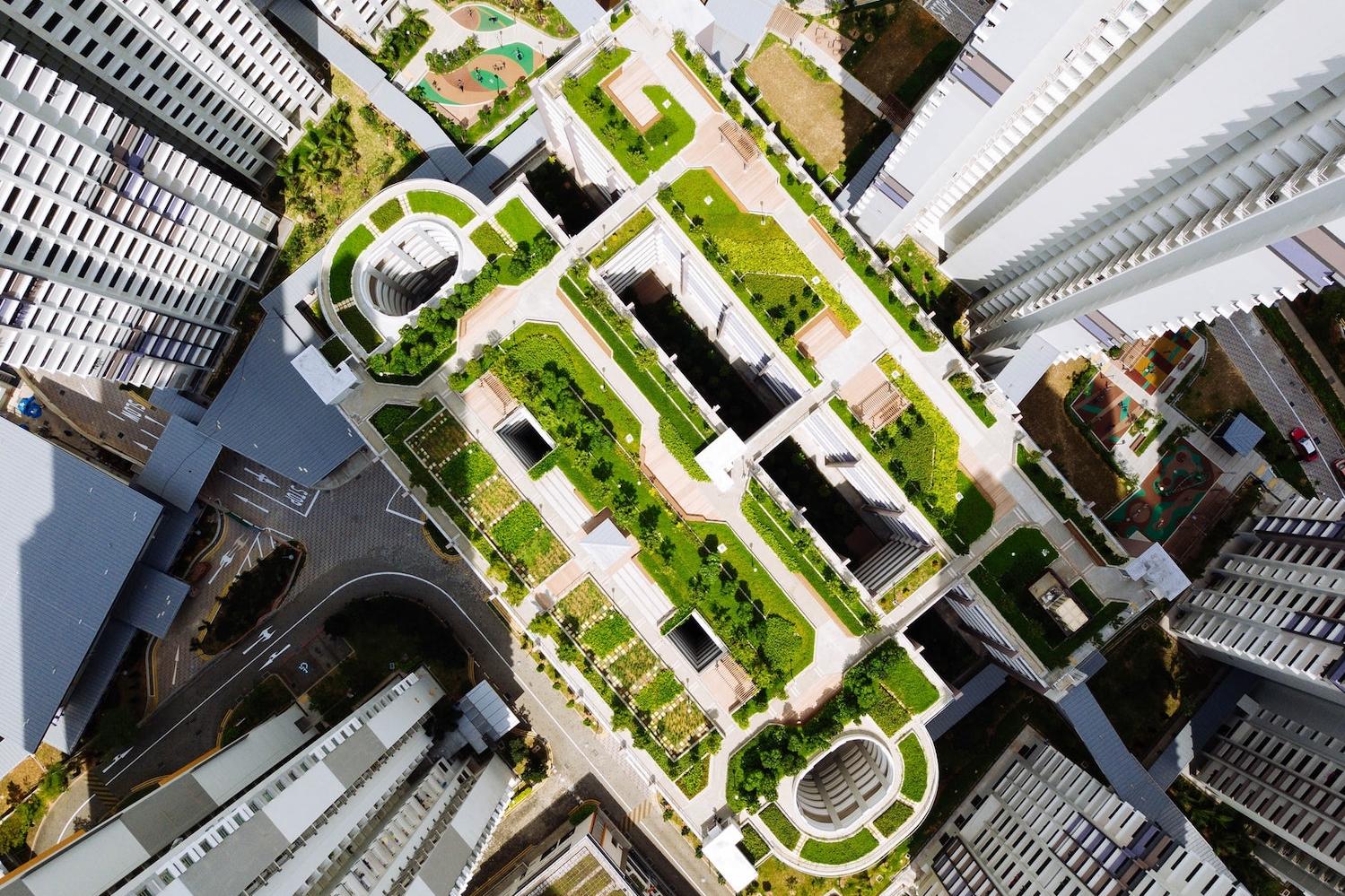
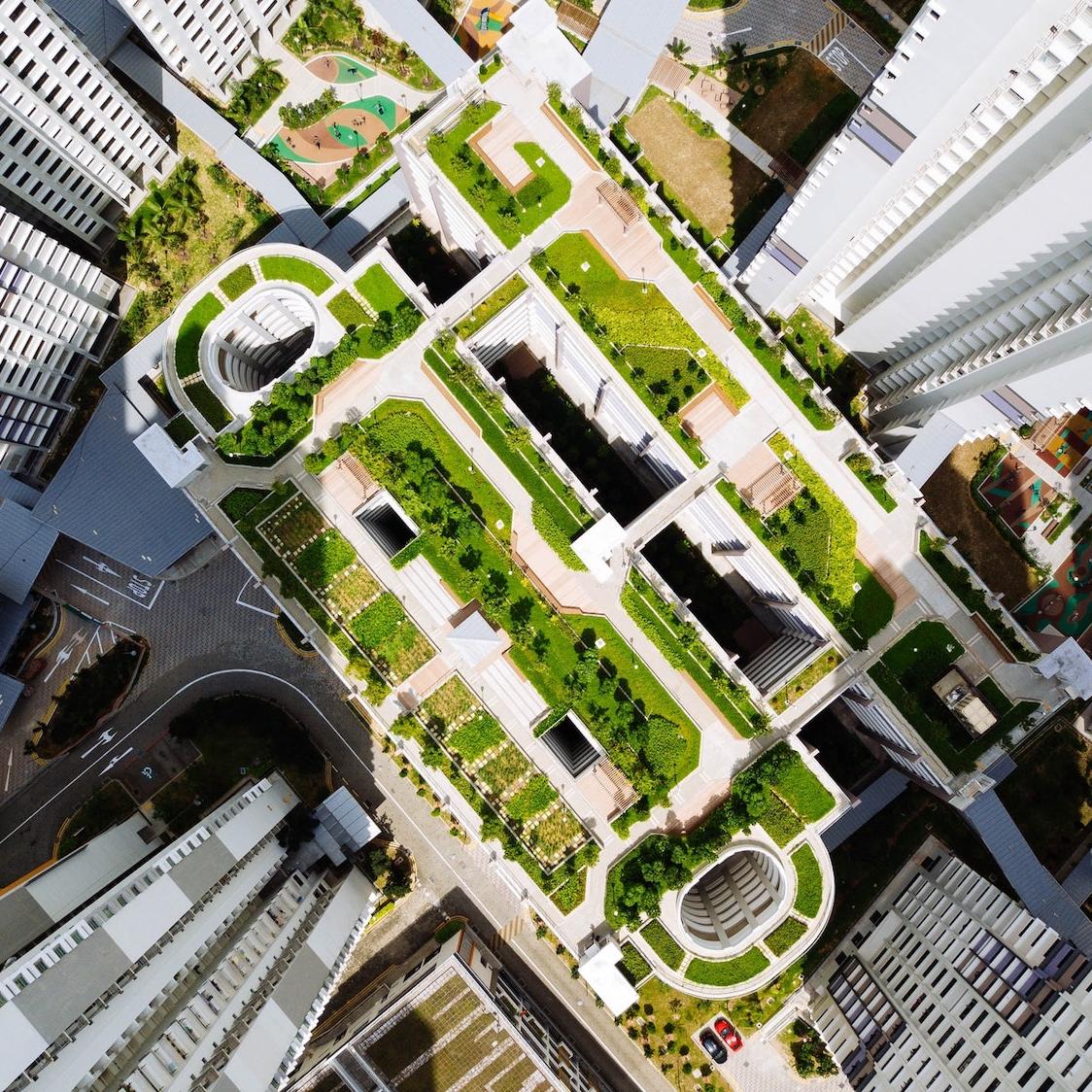
Part progress and part panic, the first three quarters of 2020 brought on the compounding effects of the novel coronavirus pandemic combined with the increasingly urgent state of the global climate emergency. Among other things, this year has been a lesson in interdependence. The reduction of corporate, travel, and social action culminated in signs of environmental reprieve, and people around the globe caught their first breath of real fresh air, their first un-polluted ride on the freeway, or their first glimpse at a star-studded, bright night sky.
But experts are urging the public to understand those signs as temporary and to contemplate the ways in which a warming planet creates the conditions that promote a viral outbreak. Seasons are lengthening, and the geographic range of transmission follows suit.
As business owners, investors, and consumers alike reconsider their routines and rebuild their new normal from the bottom up, now is an opportune time to set a positive chain reaction in motion. If our collective COVID-19 management involves taking on more environmental responsibility — whether in a portfolio, a building design or a simple commute — the chances of a repeat outbreak are mitigated, and the global devastation of the coronavirus pandemic might at least begin a process of meaningful, lasting change.
Changes in consumer behavior: Reward across the board
Better acquainted than ever with the fragility of public health and safety, and the ways in which the actions of today feed the outcomes of tomorrow, consumers are shifting their behavior in decisive and tangible ways. First, transparency has become a non-negotiable. From the brands with which they place their dollar to the buildings they call home, consumers are increasingly basing their purchase decisions on sustainability solutions.
The change is especially apparent in the real estate market. Employers and residential tenants are requesting Global Real Estate Sustainability Benchmarks (GRESBs), a sustainability assessment for real estate, and landlords across multiple sectors are noting an increase in inquiries regarding the Well Building Standards. Further, investors that sculpt their portfolios around the GRESB standards are seeing outsized returns in the market.
In fact, clean investing is garnering exceptional returns across nearly all market sectors. An analysis conducted by Morningstar on the first quarter of 2020 demonstrated that clean investing and investments tied to environmental, social and governance (ESG) metrics were outperforming their industry peers by staggering margins. Sustainable equity funds were over-represented in the top quartiles of their respective categories, and 66 percent of sustainable funds ranked in the top half of their sector regarding return on investment.
Change can be seen in spades across market sectors. Building owners are conducting audits and engineering clean solutions to existing energy leaks. Investors are looking ahead, sculpting their portfolios to represent environmental initiatives and reducing their carbon footprint. Consumer awareness is at an all-time high and, most importantly, capital reward is aligning with the ethical right choice.
The human side of sustainability
It can’t be neglected that the global public has undergone a public health crisis. Many people remain in the wake of loss, grief and economic insecurity. People have taken a step back from the bustle of daily living, and reconsidered the parts in their routines that cost them mental energy, compared to the aspects of their day that provide them with meaning. When it comes to mental health support and sustainable corporate practices, expectations have risen, and rightfully so. Gone are the days of viewing mental health as renewable energy.
Again, this mass-scale shift in behavior and expectation is providing opportunity for investors, building owners and employers. Corporate offices that incorporate green space, advanced fitness facilities and dedicated meditation space are seeing an uptick in demand. Philanthropic brands that emphasize fair-labor and employee-first company cultures are increasingly occupying the attention of consumers. For investors that are focused on both the ethics and the returns of their portfolios, the human side of sustainability can’t be overlooked.
The COVID-19 pandemic is an inflection point for new practices. Despite widespread despair and disruption, some changes have been made for the better. Due to shifts in consumer priorities, environmentally responsible portfolios are seeing huge economic reinforcements. As a moment of opportunity and a matter of life or death, the time for change in the market is most certainly now.
Image credit: Chuttersnap/Unsplash
Mitigating the COVID-19 Fallout in Africa Through Infrastructure Investment


(Image: People wear masks at a Kenyan market in April. Raw commodities and produce are the top exports of Africa, and the continent tends to import most of its finished food products. With both imports and exports slowing amidst the coronavirus pandemic, intentional intervention is needed to soften the economic blow.)
Alain Saraka co-authored this piece.
The full impact of the COVID-19 pandemic on Africa’s populations and economies has yet to be ascertained. But as the effects unfold, governments, civil society and the private sector can cushion the blow, if they act decisively. Timely deployments of public and private capital into sustainable and long-term investment projects can boost industrialization efforts, generate employment and mitigate the most deadly effect of the virus: poverty.
The anticipated decline in African GDP — the first recession in 25 years — is due primarily to restrictions and delays in international trade resulting from the COVID-19 pandemic. The importance of cross-border trade to Africa cannot be understated, as evidenced by the impressive and continent-wide political will behind the launch of the African Continental Free Trade Area (AfCFTA), a free trade pact between Africa's 55 countries. The extent of Africa’s exposure to global trade is worth restating: The continent’s food import bill is well above US$35 billion and is slated to reach US$110 billion by 2025. According to statistics from the Central Bank of West African States (BCEAO), Togo’s consumer goods import bill in 2019 alone was US$704 million, of which almost 56 percent was spent on food imports.
Meanwhile, raw primary commodities account for over 70 percent of Africa’s exports. That figure is even higher in the West African Economic and Monetary Union (WAEMU) region, a coalition of seven West African nations that includes Togo, Mali and Senegal. As a result, the pandemic has had the double impact of raising import costs on finished products while lowering the flow of exports of raw commodities. Knock-on effects of these trade impacts are only now coming to light, most notably on food security. Reactionary protectionist policies seeking to prevent staple exports — policies employed both openly and surreptitiously by governments from Europe and Asia to South America and Africa — only made things worse.
According to the World Bank, agricultural production in Africa could contract between 2.6 and 7 percent if trade blockages persist. Clearly, a reduction in agricultural activity and output would worsen the downward spiral in sub-Saharan Africa, where some 60 percent of the workforce is directly involved in the industry.
What is the answer to a primary commodity export-dependent Africa at risk due to reductions in raw agricultural produce demand, protectionism and general de-globalization? Of course, intra-African trade and the AfCFTA. However, for intra-African trade to be the panacea we all wish it to be, Africa’s infrastructure deficit and rate of industrialization must accelerate dramatically. Togo has long had a blooming trade industry focused on the capital city of Lomé, and the government has made the development of industrial infrastructure a core tenet of its 2018-2022 National Development Plan.
In August 2020, the government announced the launch of construction on the Adétikopé Industrial Platform (PIA), which will host processing and manufacturing companies from the food and beverage to the pharmaceuticals and clothing industries. Projects like the PIA, a public-private partnership between Arise Integrated Industrial Platforms (Arise IIP) and the Togolese Republic, can simultaneously tackle food insecurity by raising local production capacity and balance the trade deficit by exporting processed and finished goods.
There has been a steady drumbeat for industrial, power and transport infrastructure investment in Africa for years, but time is of the essence. All it takes is an innovative government keen on attracting nimble capital from agile investors like Arise IIP. Private investments into African agriculture infrastructure such as this one will not only create much-needed direct and indirect employment today, but also represents perhaps the surest long-term returns in a volatile global economic context. Nothing is more certain over the next decade than the powerful potential of African youth and agriculture.
Alain Saraka is the Chief Strategy Officer at ARISE IIP, a pan-African infrastructure developer that conceives, finances, builds and operates $2 billion of transport infrastructure and industrial zones across 5 West and Central African countries.
Image credit: World Bank Photo Collection/Flickr
Cisco Demonstrates How Social Investment Can Power an Inclusive Future


(Image: Mobile-powered healthcare access enterprise Living Goods is just one organization to benefit from Cisco's unique social investment model.)
Worldwide, 650 million people still live in extreme poverty. More than 1.5 billion people lack access to banking and financial services, and 617 million youth lack basic mathematics and literacy skills.
Cisco is one company working to improve access to technology-enabled solutions that can address some of these gaps and power an equitable and inclusive future.
“We want to create a world where there is equal access to opportunity,” said Mary de Wysocki, senior director of corporate social responsibility at Cisco . “We know that technology can create opportunities and new ways of learning, break down barriers, and even generate brand new industries.”
But at the same time, she added: “We’re very mindful of the fact that not everyone today has equal access to digital connectivity. We need to be thoughtful about how we innovate and how and where we make investments. Because if we’re not mindful, that can create an even greater digital divide.”
Inclusivity in the areas of education, economic empowerment, and critical human needs such as food and housing is central to Cisco’s purpose as a company. Fundamental to how Cisco fulfills this purpose is a unique social investment model pioneered more than 20 years ago and anchored in the company’s 2016 commitment to positively impact 1 billion people through its social impact grants and signature corporate social responsibility (CSR) programs by 2025. Last year, Cisco reported solid progress toward that goal, having already impacted 469 million people.
While Cisco’s longstanding commitment to corporate social responsibility guides its approach, the commitment is also driven by employee expectation, de Wysocki said. “Quite frankly, it’s not just a responsibility, but it’s also what we hear from our employees: They want to work for a company that has a purpose, that can provide even more meaning to their job or their role.”
Recent research on purpose confirms the increasing importance of corporate introspection, with the coronavirus pandemic prompting people to pay even closer attention to how companies treat their stakeholders and if action lives up to lofty commitments.
An innovative model for social investment
Cisco’s four-phase social investment model focuses on helping nonprofits serve communities better, specifically by scaling early-phase, technology solutions with the potential to drive inclusivity and empowerment for all.
Investors often look to support entrepreneurs and nonprofits with later-phase solutions, because these are lower risk, de Wysocki explained, so Cisco’s approach reaches innovators who are often overlooked. “We felt there was an opportunity to be a seed engine, to come in at the early stages and support these solutions all the way through the cycle of innovation — from blueprint, to validation, to scaling and replicating their solution, and to show demonstrated social impact,” she said.
These social investments are focused in areas where Cisco believes its technology and people can make the biggest impact: education, economic empowerment, and critical human needs such as food, water, housing and disaster response. With that scope as a framework, the model follows these four phases:
- Identify innovative technology solutions that address issues in Cisco’s areas of focus
- Develop a framework for action, then test or pilot a solution and assess the results
- Scale the successful implementation and replicate it to fit similar situations
- Operate and maintain the initiative to the point where it can sustain itself
From blueprint, to impact, to independence
One example of a nonprofit that fits Cisco’s approach is Living Goods, which uses a mobile platform to deliver on-call, affordable healthcare to families in Kenya and Uganda while also providing income for some 10,000 Community Health Workers.
According to Cisco, which funded the development of the mobile platform, Living Goods today serves 8.8 million people and has reduced the mortality rate for children under age 5 by 27 percent (based on a randomized controlled trial in Uganda). The organization has been acknowledged for building an innovative double-bottom line model, empowering local health workers to earn an income while dramatically improving the health and well-being of people living in poverty. COVID-19 assessments are now built into Living Good’s existing app, supporting governments with prevention, monitoring and response.
“We try to help the organizations we work with to understand how their solution would resonate elsewhere in the world and help them identify a path toward financial sustainability,” de Wysocki said. “That is so critical in this nonprofit space. So often you see nonprofits get a funder for a couple of years and then the partnership may not continue. Then so much time is spent trying to find the next funder, and the focus and priorities may have to shift if the funder wants something different. They can end up shifting their original vision. With our focus on impact measurement, our intention is to help these organizations truly define their value framework [and] tell their story about the impact they are having in the world.”
In keeping with its investment model, Cisco maintained a relationship with Living Goods from its initial seed funding in 2012 until today. Following another round of grant support from Cisco in 2013 and 2014 to refine the mobile platform, Living Goods now uses the platform in every aspect of its business. The two organizations are now in the midst of a multi-year partnership designed to enable Living Goods to leverage digitization more deeply and serve more people with better products, services and health outcomes.

Supporting equal access to the digital economy
Another long-term partner working closely with Cisco is MIND Research Institute, a nonprofit social impact organization specializing in neuroscience and education research. Its mission is to mathematically equip all students to solve the world’s most challenging problems. It is the creator of ST Math, a visual instructional program that leverages the brain's innate spatial-temporal reasoning ability to solve mathematical problems. Educators across the U.S. use this program with students in pre-kindergarten through 8th grade.
That equitable access leads to equitable opportunities for growth is a key tenet of the program. Some 70 percent of students using ST Math are traditionally underserved, and two-thirds of MIND’s partner schools serve low-income students. Studies have shown a much lower level of proficiency in math among African-American and Hispanic students, evidence of the systemic gaps in service faced by students of color which result in digital divides, said MIND Research Institute CEO Brett Woudenberg. Groups including the Economic Policy Institute (EPI) warn that these achievement gaps will only widen due to the COVID-19 pandemic.
In response, the MIND Research Institute has moved quickly to offer free math education to students living at home, and over 1 million students have taken advantage of the no-cost access to ST Math since school closures began in mid-March, Woudenberg said.
Along with the solid foundation in math, MIND’s aim is to prepare students to become part of the technology workforce of the future. Cisco has been a capacity-building partner for MIND for over a decade, helping it reach 1.2 million students with ST Math.
The uneven path to the science, technology, engineering and math (STEM) workforce has resulted in a lack of diversity in that workforce. Despite making up 11 percent of the total U. S. workforce, only 9 percent of the STEM workforce is Black. And while 16 percent of the workforce is Hispanic, only 7 percent of STEM workers are. Women are also underrepresented when it comes to computer and engineering jobs: Despite comprising half of the workforce, women hold only 14 percent of computer-related jobs and 14 percent of engineering jobs. Yet computer-related jobs have grown over 330 percent since 1990.
Cisco’s focus on impact measurement has also proved valuable. “Because of Cisco’s investment, MIND now has a ‘best in class’ ability to access and analyze data about how the program is being used and how it is making a difference for students every day,” Woudenberg said. “In addition, Cisco continues to enable MIND colleagues to work and collaborate remotely through its teleconferencing infrastructure, which proved to be critical during this pandemic.”
Encouraging the next generation of entrepreneurs
The future of the workplace is an ever-present theme in how Cisco approaches social investment, particularly in enabling the necessary digital skills for young people to thrive in a connected world. The World Economic Forum estimates that by 2022, 75 million jobs may be displaced by shifting labor between humans and machines, while 133 million new roles may emerge.
A particular focus is on investing in young social entrepreneurs through the Cisco Global Problem Solver Challenge, which aims to recognize new business ideas that leverage technology for social impact. It awarded $350,000 in prizes in 2020, with the grand prize going to Savanna Circuit Tech, a solar chilling transit system to help dairy businesses and cooperatives in sub-Saharan Africa cut post-harvest losses.
As interest in and impact of the prize grows, Cisco is expanding it to offer a total prize pool of $1 million this year, with the grand prize winner receiving $250,000. (You can read more about the Challenge, and some of the impressive and inspiring winners, in a future part of this series.)
“We need more jobs around the world, so it is super critical to think about these young people and encourage them to think about being entrepreneurs and to leverage technology for solutions,” de Wysocki said. “As technology innovations continue to create new business models, we envision a world where everyone can have opportunities so they can compete in the digital economy.”
This article series is sponsored by Cisco and produced by the TriplePundit editorial team.
Images courtesy of Living Goods and the MIND Research Institute
How One Email About Feeling Seen at Work Translated Into Thousands in Donations to Social Justice Groups


When historians one day look at 2020, it will likely be as defined by a long-needed reckoning around racial and social justice as it is by the coronavirus pandemic. The highly publicized murders of Ahmaud Arbery, Breonna Taylor, and George Floyd sparked a global conversation about race relations and criminal justice reform.
In the months since, tens of thousands of people have taken to the streets in protests demanding systemic reform that addresses the countless ways Black men and women are demeaned, diminished and put in danger every day. The reinvigoration of the Black Lives Matter movement has since translated into millions of dollars in donations to social justice groups, major cities pledging to change how they fund police departments, and a record number of Black, justice-oriented candidates running for political office in the fall election cycle.
Months ago, any sort of silver lining result seemed painfully far away for Noel Abdur Rahim, an assurance partner at PwC’s Atlanta office. In the days following Floyd’s murder, Rahim continued to log into her Zoom calls and answer her emails, but she felt distant from her coworkers and increasingly unseen in her virtual workplace.
"I was feeling somewhat alone, even though I was talking to colleagues every day on video chat,” Rahim remembers. “I felt like I was hiding my true feelings.”
In response, the six-year PwC veteran penned an email to her colleagues, praising the supportive work environment she enjoyed during her tenure but wondering why — unlike other times when something good or bad happened to someone on the team — no one was checking in on their Black colleagues or offering support. She linked to a viral article by Refinery29 managing editor Danielle Cadet entitled Your Black Colleagues May Look Like They’re Okay — Chances Are They’re Not.
“The premise of the note was that it may look like your Black colleagues are okay, but deep down inside, they’re not — and you shouldn’t be either,” Rahim tells TriplePundit. She went on to talk about the love she felt for her son, Ibby, who one day would go from being “a sweet Black boy to a feared Black man.”
“I wanted to make sure people understood in a relatable way, and that’s why I brought up Ibby and the fear I have of raising him as a Black boy, who one day would be a man, in America,” she explains.
"The email wasn’t meant to shame anyone,” she’s quick to note, “but as a general reminder that we all can be doing something to help the people around us feel comfortable, feel supported and feel welcomed.”
The note struck a chord with a number of colleagues, particularly Tim Whitson, a self-described “old white guy” and a partner in the audits department at the Atlanta office. “I never really had a concern for my son and my daughter when they leave the house. When she said that, it hit home for me,” Whitson says. “I realized I have to stop being a passive supporter of my Black friends and colleagues, and I spent a little time thinking about: What could I do? What could be an idea that would take away the excuses from white people?”
A moment of honesty gives way for a wave of support for social justice
Whitson approached Rahim, and the two devised a plan to launch a fundraiser for social justice organizations and communities in need. The fittingly named campaign, “Ibby’s World,” collected donations from PwC colleagues for two Atlanta-based organizations — the Future Foundation and the Southern Center for Human Rights — as well as the Community Building Initiative in Charlotte.
Established in 2001, the Future Foundation seeks to be a “second family” for low-income kids by providing an after-school program and other enrichment opportunities. As involuntary remote learning became the new reality amidst the coronavirus pandemic, threatening to expand the gap between wealthier and poorer students, the Foundation created a fund to ensure low-income communities have access to technology and learning resources.
The Southern Center for Human Rights is an advocacy group for social justice in the South that fights for social and criminal justice reform. The Community Building Initiative is out to fight bias, remove barriers to opportunity, and build equity and justice in the Charlotte area.
“They have similar missions but go about it in different ways,” Rahim says. “I’m really passionate about the proceeds going directly to communities in need.”
As they called on their colleagues for donations, Rahim and Whiston also distributed wristbands bearing the name Ibby’s World as a reminder of what’s at stake for communities across the country if social justice conversations fizzle out.
“I was visiting a fellow partner who is very passionate about Ibby’s World, and he started distributing the wristbands to all of his family and friends,” Rahim says. "As soon as I walked into the house, his sister raised up her arm to show off her band and said, ‘I’ve been telling everybody about the idea, and it’s really generated some conversations.’ To me, that’s exactly what this is all about.”
"The fundraising is phenomenal,” she goes on, "but it’s more important to couple that with conversations and to understand that we all — as a community, as a country — can do more in everything we do to make the world a better place.”
Ibby’s World has since garnered more than $31,000 in donations. It’s a testament to what can happen when colleagues are seen, heard and supported in their workplaces — and when teams band together in support of a common cause. “I would say the firm is better for the impact that Noel had,” Whitson says. “She’s woken some of us up.”
Image credits: Clay Banks and James Eades via Unsplash
Why the Pandemic Exacerbated Economic Inequality in the U.S.
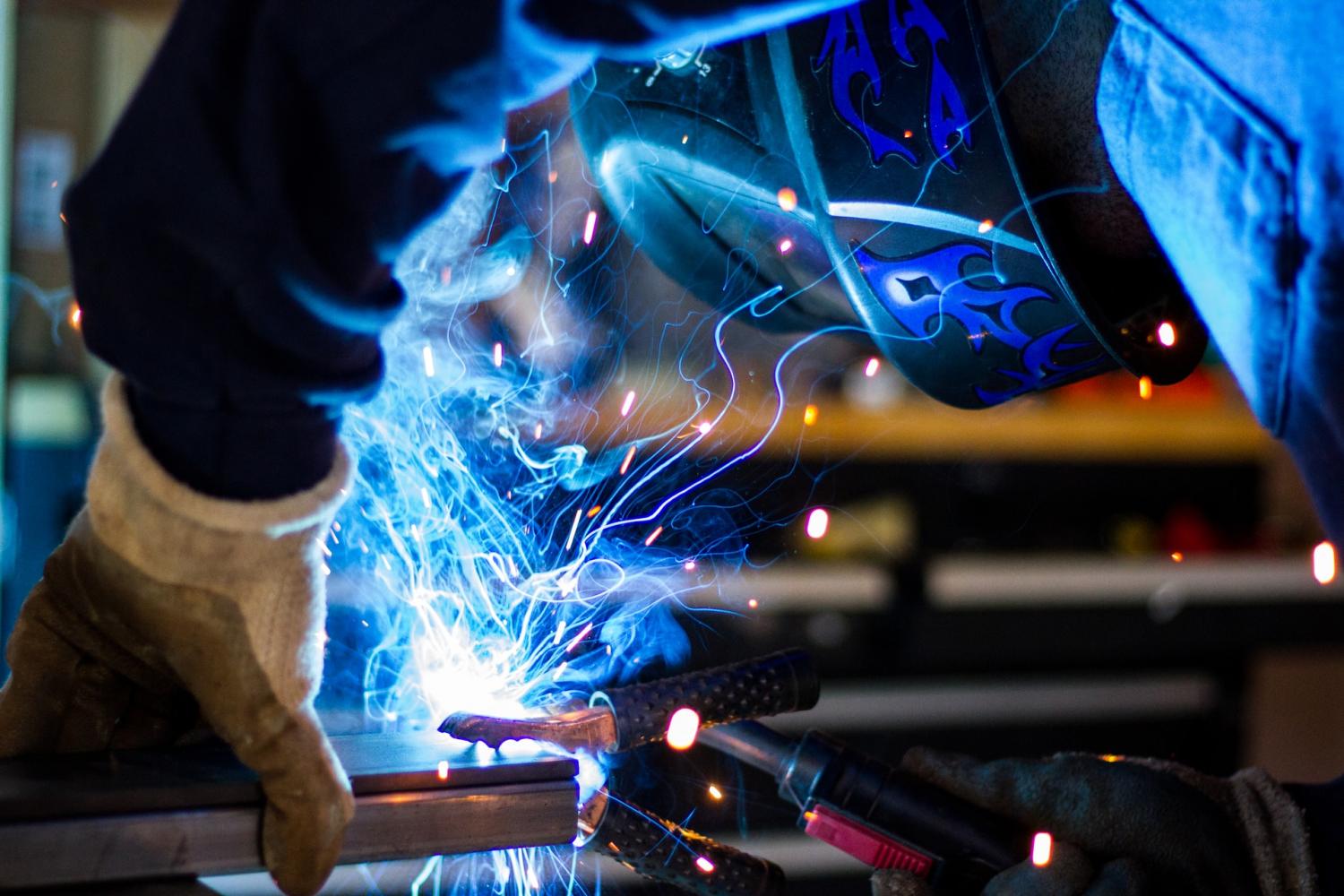

Before COVID-19, the U.S. was a lot like a movie set. Observers saw a beautiful façade on the outside, complete with a roaring stock market and historically low unemployment. Hidden from view was economic inequality starkly dividing the U.S. workforce: blue-collar laborers on one side and white-collar “knowledge workers” on the other.
While this division was already noticeable to some, the pandemic made it painfully obvious to all.
A wider divide in economic inequality
Over the past eight months, white-collar workers have made a successful transition to remote work, performing their jobs online from the comfort of their homes. Many don’t realize that this transition has been made entirely possible by blue-collar workers, who have no choice but to continue leaving the safety of their homes each day to earn a living.
In many cases, these Americans are working far more and earning far less than their work-from-home counterparts. Most are living paycheck to paycheck.
This is even more confounding when you consider that the basis of capitalism is increased production leading to increased salaries. While U.S. productivity has risen exponentially, salaries have risen much more slowly. Between 1979 and 2018, productivity grew six times faster than hourly pay. As a result, we have a group of people who are working harder than ever but not getting paid enough for their efforts.
The myth of equality of opportunity is now even less true
The U.S. has long been considered the land of opportunity, but the COVID-19 pandemic has shown that equality of opportunity is a myth. For upper-class Americans, 2020 has become a time of reinvention and recuperation. For the poor and middle classes, it’s been a time of unprecedented hardship and even wider economic inequality.
These workers have been forced to risk their health and the health of their families each day they leave home - for the job site, the hospital, the classroom, or the station. Many of the people in this class of workers were already living paycheck to paycheck, and the pandemic has only added to this strain. Their only choices for survival were to become dependent on someone else or go out and work; there’s no in-between option.
Our country is home to more than a quarter of the world’s billionaires, but our immense wealth is concentrated in the hands of relatively few people. This economic inequality is indeed a problem, as the floor of opportunity should be far and wide, fair and right. Often, the opportunity for blue-collar workers to participate more fully in the economy simply isn’t there.
For example, how much time do business leaders spend thinking about how to reenergize, retrain, and remobilize U.S. workforces when moving 100,000 jobs from the U.S. to another country? Unless they make that a priority, nothing will change for those workers.
Taking on the economic inequality gap
How can the business community enable more people to participate in the economy that everyone has worked so hard to create? By seeing business as part of the solution, as builders of the community, and as responsible for that community. In my book, It’s About Time: How Businesses Can Save the World (One Worker at a Time), I explore the role companies can play in enriching the lives of all people amid constantly changing societal and economic circumstances.
I believe the balance is off for blue-collar workers. Historically, our workplaces were designed to motivate white-collar workers, focusing on and investing in what they can do tomorrow. Meanwhile, we tend to focus only on what blue-collar workers can do today. Businesses need to see those people as a source rather than a resource — and invest in them.
For example, leaders could motivate blue-collar workers by encouraging them to grow into different roles in the company within two years. Those leaders must also invest in the development of those workers to help them achieve that goal. When everyone is allowed to grow and be part of an organization’s ecosystem, we can get closer to equal participation in the economy.
A good example of a company that practices this successfully is Uber. During the pandemic, it has converted its workforce - whose livelihood depends on a service that had decreasing demand - into delivery drivers. Other businesses can have a similar impact on their teams by working to foster change and improve the economic standing of their workers.
The problems we face today won’t disappear overnight. Economic inequality has been a persistent aspect of American life since our nation’s inception. But if more businesses can recognize the power they have to help solve this problem, progress is possible. It’s time for modern companies to develop a conscience that they can use to guide business - and humanity - into a better tomorrow.
Image credit: Rob Lambert/Unsplash
Black Voters Decided the U.S. Election — And They’re Poised to Reshape Business
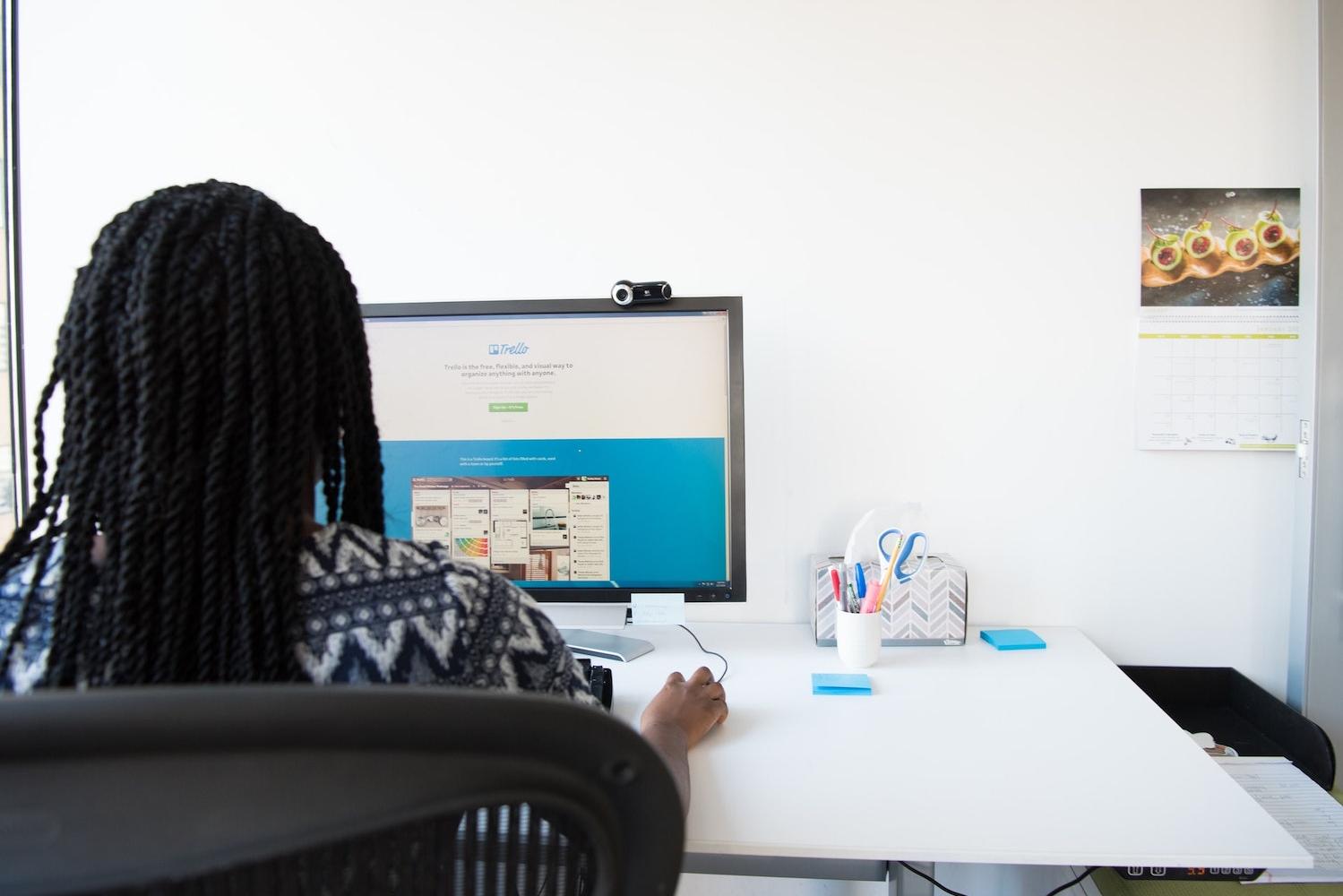
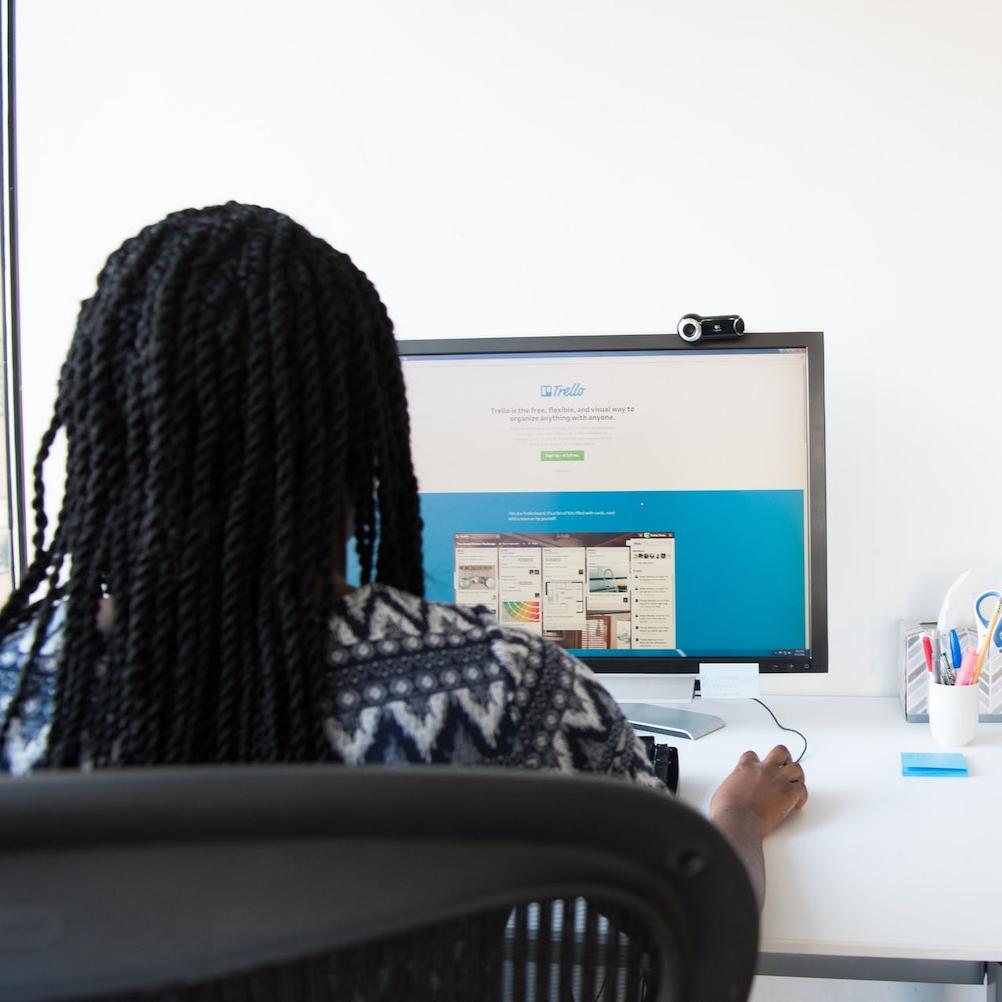
Black Americans showed up in huge numbers to vote in the 2020 election cycle. Analysts say their massive turnout in major American cities including Philadelphia, Detroit, Milwaukee and Atlanta played a key role in pushing Democratic candidates Joe Biden and Kamala Harris to presumptive victory in the presidential race.
As outlets including the Black Information Network observed, those grateful for a Biden and Harris win can largely credit Black community organizers. The Movement for Black Lives summed it up neatly in an email to supporters on Saturday, "This is a testament to the power of Black people and Black organizing." Due to mounting factors, Black Americans are increasingly poised to reshape the landscape of business, too.
A long-awaited wave of Black corporate executives may be around the corner, but numbers are just the start
In just one example, as racial justice protests spread around the world in response to the murders of Ahmaud Arbery, Breonna Taylor and George Floyd, a growing number of companies put targets in place to increase the number of Black people and people of color in leadership roles.
While many argue (for good reason) that pledges to increase leadership representation over the next five to 10 years pale in comparison to the change that's needed, realizing these goals has the potential to bring hundreds if not thousands of new voices into the top brass of America's largest companies. And as is often said: You can't manage what you don't measure. “Companies that write affirmative-action plans, which set goals, see more progress toward diversity than companies that don’t,” Frank Dobbin, a professor of social sciences at Harvard University, told the Tribune News Service in September.
Change in this area is sorely needed: Though Black Americans comprise more than 13 percent of the U.S. population, they account for just over 3 percent of executive or senior leadership roles at major companies, according to a 2019 study from the Center for Talent Innovation.
“Despite many good intentions, companies are falling short of creating equitable workplaces for Black employees," Patricia Fili-Krushel, CEO of the Center for Talent Innovation, said in a statement announcing the findings last year, as quoted by Black Enterprise. "We hope that business leaders will respond to these findings by making a serious assessment of their own workplaces and creating a comprehensive plan of action.”
It is, frankly, shameful that it took a string of highly publicized murders and a wave of global racial justice demonstrations for many companies to put such action plans into place. But now that they have, some are hopeful change could be coming to the executive suite — which remains, as Jessica Guynn and Brent Schrotenboer of USA Today put it, "one of America’s most exclusive and impenetrable clubs."
Still, others insist that increasing the number of Black people and people of color in leadership positions is far from the end game. "Corporate diversity shouldn’t be a goal," Travis Montaque, founder and CEO of the messaging technology company Holler, wrote in Fortune. "It should be the outcome of a fundamental shift in the DNA of a company."
In recounting his own experience in a Wall Street diversity program before founding Holler, Montaque said he often felt like the "diversity kid" and was expected to adapt to fit the organization's culture, rather than the culture changing to be more welcoming to everyone. "Executives need to take an honest look at their own corporation’s identity," he continued. "In the process, business leaders should ask themselves how they can make systemic changes at the ground level that will hold everyone in the company accountable for working toward true diversity and equality."
Black small business owners are on the cusp of redefining Main Street — if they can survive the pandemic
Like Montaque, a growing number of Black Americans aren't waiting for the C-suite to welcome them and are founding their own enterprises instead. Black women in particular represent the fastest growing entrepreneurial population in the U.S.: The number of companies owned by Black women has grown by 164 percent since 2007, and they now launch more businesses than any other group.
Still, Black entrepreneurs are notoriously underfunded. According to 2020 data provided by the Federal Reserve, Black Americans were twice as likely to be rejected for small business loans compared to their white counterparts. In the venture capital world, DigitalUndivided’s Project Diane found that firms owned by Black women received an infinitesimal 0.0006 percent of the total VC funding raised by startups from 2009 to 2017.
Challenges with funding extended through the coronavirus pandemic, putting businesses owned by Black Americans and other people of color at disproportionate risk of closure. Only 12 percent of Black and Latino business owners received the funds they requested through the Paycheck Protection Program (PPP), the fund established by the federal government to help small businesses weather the economic storm. Of the businesses that chose to identify race in their loan applications, Black-owned businesses received 1.9 percent of PPP loans while white-owned businesses received 83 percent, according to data from the Small Business Association.
With this in mind, it's not surprising that Black-owned businesses were twice as likely to permanently close in the wake of coronavirus shutdowns, but some say the pandemic also presents an opportunity to create parity among all entrepreneurs, once and for all. Reaching revenue parity between white- and Black-owned U.S. businesses as part of thoughtful and targeted COVID-19 recovery amounts to a $290 billion opportunity to grow overall wealth, according to a new report from McKinsey & Co. But as 3p's Roya Sabri observes, realizing that potential requires intentional action from both the public and private sectors. That's hardly a given in today's environment, but some cities are already getting started.
The bottom line: Election results show that Black Americans aren't waiting for an invite
We could go on and on listing the ways in which businesses, financial mechanisms and other systems have failed Black Americans throughout history and up until today. But the results of the 2020 election make one thing clear: Black organizers, innovators and leaders aren't waiting for white America to wake up and solve those problems — they're solving them on their own. And given what we know about diversity and financial results, their efforts are poised to — once again — benefit us all.
On Veteran’s Day, More CEOs Must Stand Up for the Peaceful Transfer of Power
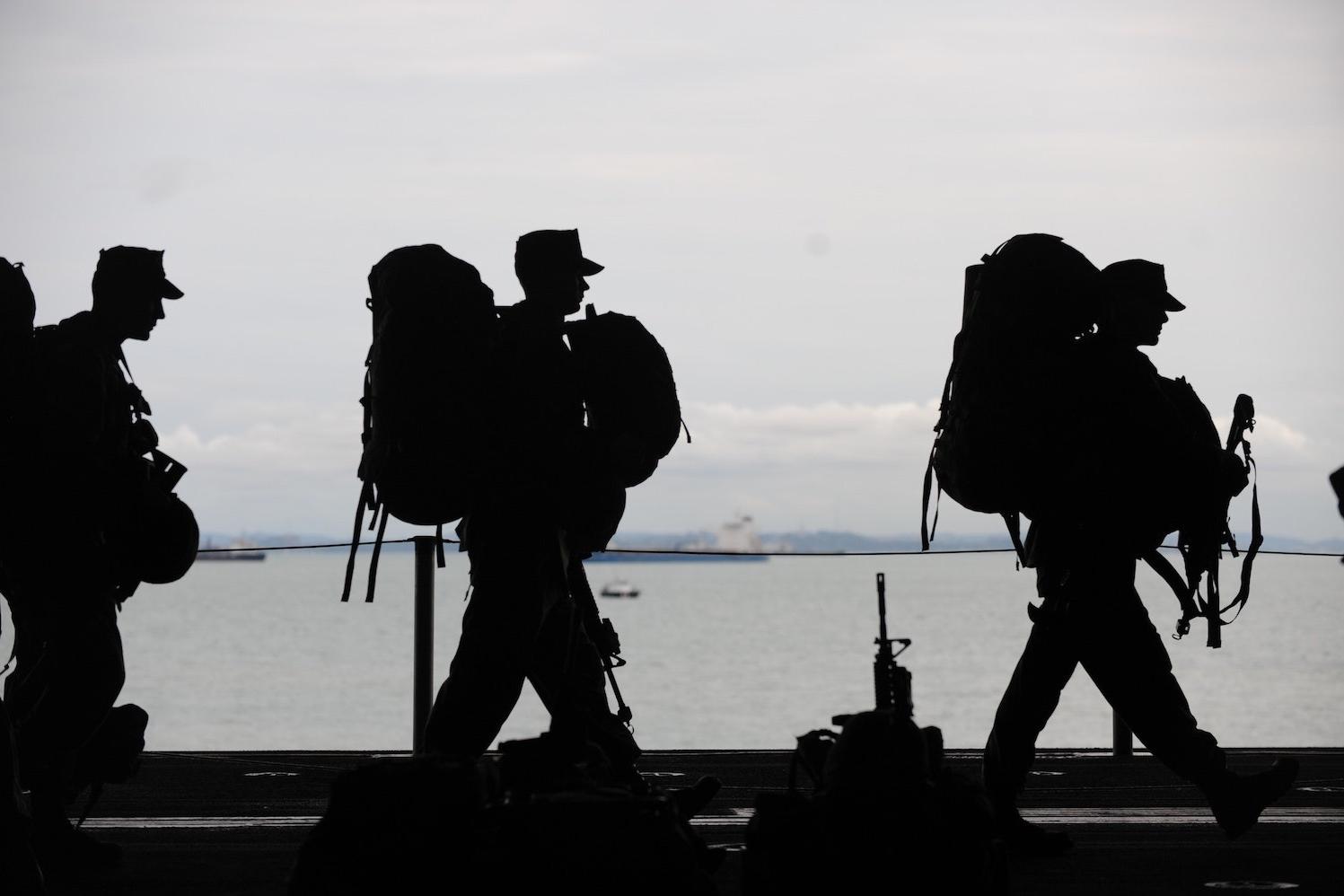
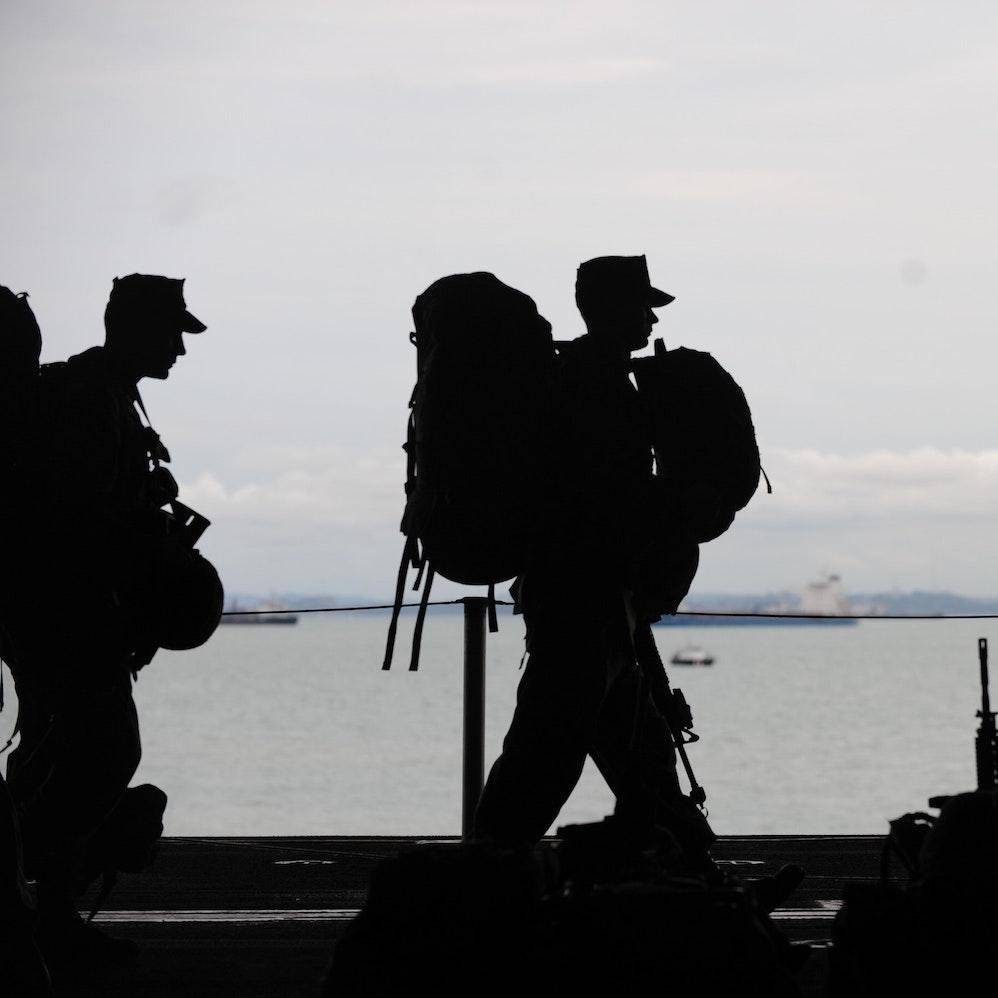
The peaceful transfer of power has been called the the bedrock of American democracy, so it would seem that CEOs who affirm their support for the exercise are simply describing the normal state of affairs. However, nothing has been normal during the term of U.S. President Donald J. Trump. The president appears determined to cling to power by de-legitimizing the general election, making it all the more important for business leaders to speak out and defend the principles for which thousands of Americans have fought and died.
What happens when a president fails to concede?
According to most constitutional experts, an incumbent president who refuses to concede has very few options.
However, one of those options could prove crippling, at least in the short term. As stipulated by a 1963 law, the General Services Administration is tasked with processing the documents that provide the president-elect’s transition team with resources and access to high-level personnel, including access to the Department of Defense. In particular, the law requires the GSA to “ascertain” the winner of the election before setting the wheels in motion.
This obscure law explains why Trump and his allies have relentlessly peppered the national conversation with accusations of voter fraud and other irregularities during the general election, despite having no evidence in hand.
So far, all of Trump’s legal actions have failed their tests in court. Nevertheless, U.S. Sen. Lindsey Graham (R-S.S.) and other top Republicans have persisted in arguing that Trump has the right to contest the election in court.
In support of this argument, Graham has reportedly donated $500,000 to finance Trump’s legal actions in several states, and the overwhelming majority of Republican legislators in Congress have refused to acknowledge Joe Biden as the president-elect.
In addition, on Monday evening, reports surfaced that U.S. Attorney General William Barr has issued an unprecedented, blanket authorization for U.S. attorneys to pursue “substantial allegations” of fraud. Barr stipulates that the authorization only extends to “clear and apparently-credible” allegations, but the vague language and the mere fact that he has taken this highly unusual step only lend further credibility to an incredible line of argument.
While all this appears to be an exercise in futility, it is far from a harmless tantrum or public relations stunt. The cumulative result is that Trump and his allies have provided GSA chief Emily Murphy with support for declining to ascertain that Biden is the president-elect, at least until after the Electoral College meets on Dec. 14.
With the COVID-19 pandemic reaching a new level of crisis and the economy still struggling for a foothold, any further delay in the peaceful transfer of power will hobble the incoming Biden administration at a time of national crisis and bring more misery to millions of American households, while providing Trump and his allies with an ongoing platform for falsely and fraudulently claiming victory in the general election.
Why bankers should stand up for veterans
According to multiple reports, pressure on Emily Murphy to start the transition process has already begun to build, and that is where the voices of business leaders could have a profound impact on the course of the nation in the coming days and weeks.
If the pressure does increase, several Wall Street firms may take credit for being among the first to speak out.
That should come as no surprise. As a group, America’s bankers profess to act in the interests of the nation, and support for active duty military and veterans is typically a key element in the community relations strategy of many financial institutions.
As more data from voting patterns in the general election become available, bankers may also feel that a previously solid Republican voting block — U.S. military voters and their families — has soured on the president’s policies and behaviors, providing a cushion of support for others to speak out on behalf of the peaceful transfer of power.
If the final general election numbers bear that pattern out, it may be partly due to the president’s persistent, but false, claim that voting by mail is inherently fraudulent. After all, active duty military and their families are routinely stationed far from their permanent homes, are frequently reassigned, and often vote by mail.
The president’s false accusations about mail-in ballots raised the alarm among military advocates in the run-up to the general election. In September, a nonpartisan election reform organization called RepresentUS launched the Count Every Hero campaign aimed at ensuring participation among military voters.
Reports have also begun to surface that veterans are angered by the attacks on mail-in ballots. On Nov. 6, the Associated Press cited several military veterans who vigorously pushed back against the president’s claim of fraudulent votes by mail, including one who voted in his home state of Florida throughout a 30-year military career spanning positions in Afghanistan, Iraq, Germany and different assignments in the U.S.
In one case that has grabbed the media spotlight, Trump sympathizers have reportedly submitted a list of 3,000 Nevada voters accused of casting their ballots illegally while living out of state, including active duty military and their families.
At least one person on the list, a military spouse, has pushed back publicly and pointed out that the list includes residences on Hill Air Force Base, located just across the Nevada border in Utah, as well as civilian addresses. Nevada is also home to Nellis Air Force Base, among other military facilities.
Who has spoken out — so far
Bank of America is one financial institution that has focused on veterans' services, and earlier this week the firm’s CEO Brian Moynihan made it clear that there is no justification for Emily Murphy to withhold ascertainment from President-Elect Joe Biden.
Moynihan spoke at the opening of the company’s high-profile Future of Financials 2020 virtual conference on Monday, and he congratulated Biden and Harris on their successful campaign.
Among other comments, Moynihan also emphasized that there is important work to be done for the sake of the nation, stating: “We look forward to working on the big problems that face the world.”
Goldman Sachs is another firm that focuses on veterans' services in its corporate citizenship profile, and CEO David Solomon posted a message on social media emphasizing the need to protect and restore the nation as the COVID-19 crisis intensifies. “We are ready to engage as [Biden and Harris] confront the important challenges of tackling the pandemic and rebuilding the economy,” he wrote.
JPMorgan Chase CEO Jamie Dimon echoed that sentiment in a statement on Nov. 7, when the Associated Press issued its official call on the results of the general election. “We are a stronger country when we treat each other with dignity, share a commitment to a common purpose and are united to address our greater challenges,” Dimon said.
The message is clear: CEOs must support a peaceful transfer of power
Taken together, these statements render a clear message that the good of the nation outweighs Trump’s personal desire to retain his hold on the office. That message may not convince a significant number of Trump’s supporters. However, it has already resonated with top business leaders, even before election day.
If snap polls from the Yale University Chief Executive Leadership Institute’s virtual CEO Caucus in September are any indication, Emily Murphy will be hearing from many more business leaders in the days to come.
“A majority of the business leaders gathered for the Chief Executive Leadership Institute’s virtual CEO Caucus on Sept. 23 gave President Donald Trump a failing grade on his response to the COVID-19 pandemic,” the Yale School of Management reported, citing a figure of 55 percent for the attendees who gave the president a failing grade of "F.”
“An even larger majority of 84 percent of the group said that the administration’s response to the crisis had hurt their businesses; similar majorities said that the U.S. response is worse than other industrialized nations and that the government response had increased the number of deaths in the U.S,” the School of Management added. “Seventy-seven percent of the business leaders said they would be voting for Joe Biden over Trump in the November election.”
In the runup to election day, many business leaders advocated for change and took action to support voting rights, including making safe places for in-person voting available and providing employees with time off to vote.
Now election day has come and gone and a historic number of votes have been cast, but President Trump openly defies the foundation of American democracy. The hard part lies ahead, and more business leaders must speak up and take aggressive action to defend the peaceful transfer of power.
Image credit: Pexels
Individual Responsibility vs. Corporate Accountability: Shell's Botched Climate Poll Rekindles the Debate
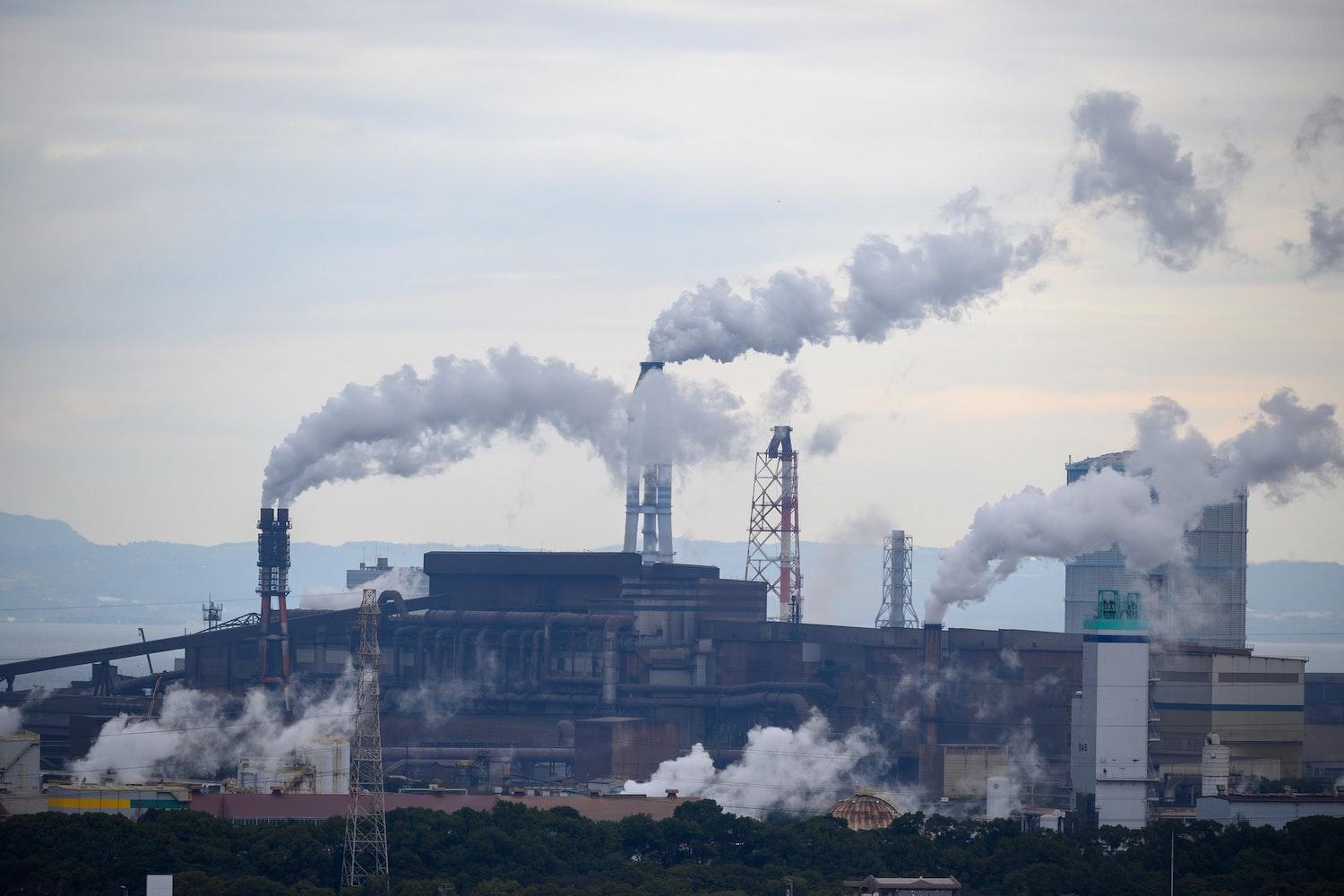
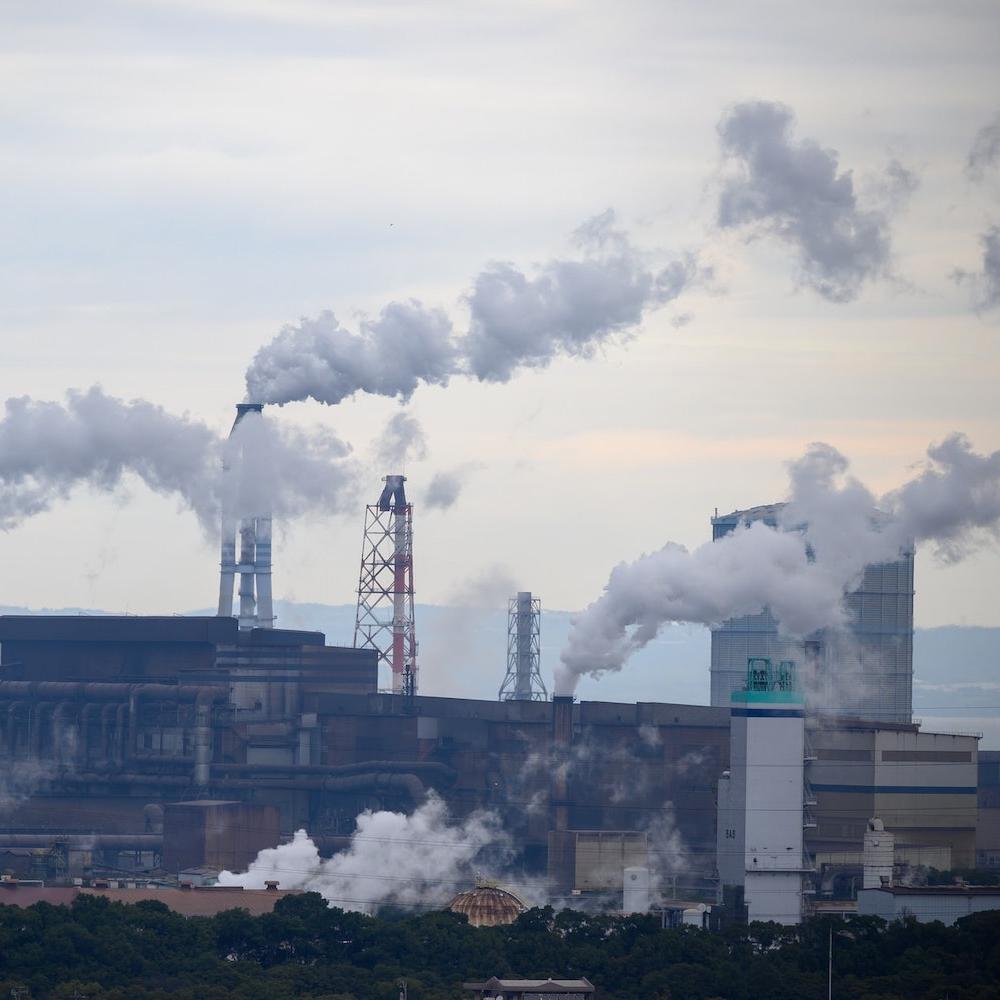
Royal Dutch Shell received an unwelcome tutorial in how not to run a Twitter poll last week when the company asked users of the popular communications app what they would do to reduce greenhouse gas emissions. The poll sparked a furious burst of outrage from climate action advocates, who accused the company of deflecting from its own responsibility for the climate crisis. Nevertheless, the the poll does raise some important points about the ability of individual action to make a difference in global emissions, even if they are not quite the points Shell intended to make.
This really was one weird climate action poll
The Shell poll headed for trouble right out of the gate when it launched on Nov. 2, partly because Shell declined to provide any introduction or context for the question. The company’s tweet simply read, "What are you willing to change to help reduce emissions?” and provided participants with four choices: “offset emissions,” “stop flying,” “buy electric vehicle,” and “renewable energy.”
Only Shell's team can say what they hoped to learn from that bare-bones approach, except that the poll seemed intended more as a conversation-starter than any meaningful attempt to gauge public opinion. After listing the choices, the tweet suggested continuing the conversation under the Twitter thread #EnergyDebate.
Some conversation! The poll received only 199 votes before Shell shut it down, possibly due to the overwhelming torrent of negative replies, numbering into the thousands. Greta Thunberg and U.S. Rep. Alexandria Ocasio-Cortez were among the high-profile climate activists who put their Twitter seal of disapproval on the poll, bringing even more unwanted attention upon Shell.
When is a choice not a choice?
Shell and other fossil fuel stakeholders are ultimately responsible for much of the climate crisis, all the more so because their own scientists confirmed and correctly predicted the impact of oil and gas extraction on global warming decades ago.
The proof is in the pudding. Decarbonization of the global economy is already under way, partly at the insistence of activist investors. Shell and other leading fossil energy companies are pivoting into renewables, and advocates insist they must accelerate change in order to avert catastrophic climate change in the coming years.
However, if Shell’s intention was to deflect blame on to individuals, the poll was a curious way to do it. The four choices presented in the poll are not really individual choices at all. Access to electric vehicles and renewable energy both depend on the availability of technology. Similarly, access to offsets depends on markets and financial instruments. For that matter, offsets are beyond the budget of many households, especially those that are already stretched to the breaking point during the COVID-19 crisis.
Of the four options, flight is the only one that does leave some leeway room for individual choice, especially where vacations and short trips are concerned. However, even that is somewhat misleading. Many people rarely or never fly in the first place, either because they don’t need it, they can’t afford it, or they are afraid of it. On the other side of the coin, many people who fly regularly have no other choice, unless they plan on switching careers.
In addition, the whole issue of flight and carbon emissions may become moot in the coming years as the aircraft industry transitions to biofuel, batteries and fuel cells.
What Shell omitted
If anything, the poll puts the burden of action squarely back where it belongs: on the shoulders of Shell and other historic polluters.
To be clear, though, the poll does not absolve individuals from their responsibility to contribute to a more sustainable future.
If Shell really wanted to deflect responsibility on to individuals, it could have listed real choices that individuals make on a daily basis, with varying degrees of access based on their financial situation and other circumstances. Some of these choices can also have a ripple effect, if they help grow the market for more sustainable products.
For example, energy experts have long recognized that energy efficiency is one of the low-hanging fruits of decarbonization, whether it simply involves changing a lightbulb or caulking windows, or investing in weatherization, energy-efficient appliances or a new HVAC system.
Choosing reusable bottles and other long-lasting items over disposable ones is another area in which individuals can exercise their influence on manufacturers. The same goes for choosing to buy household products that require less packaging, or products that eliminate petrochemicals.
Choosing to recycle is another area in which individuals can exercise a powerful influence, especially in future years as next-generation recycling technology becomes available.
Why it matters
Although some environmental advocates hesitate to focus on lifestyle choices, that is also going to become a key issue as the decarbonization trend accelerates, simply because sustainable products are not free of impacts.
Biobased products, renewable energy, electric vehicles, and other products are fraught with land competition issues including the use of agricultural lands, forests, and natural habitats, in addition to impacts related to mining and manufacturing.
Be that as it may, Shell has a long road to travel before it can shuffle blame for the climate crisis on to individuals.
As reported by Energy Voice, in September Shell dealt itself into a raft of new offshore oil assets through the firm Kosmos Energy.
On Nov. 4, just two days after Shell dropped the Twitter poll like a hot potato, reports surfaced that the company had acquired a stake in the Transkei and Algoa oil and gas exploration basin off the coast of eastern South Africa. The deal gives Shell a hand in the ongoing exploration of a 17,698-square-mile expanse, and the company has announced plans to speed up the timeline of work already under way.
Image credit: Kouji Tsuru/Unsplash
Autonomous Cars: A Smart Cities Answer to COVID-Proof Transit?
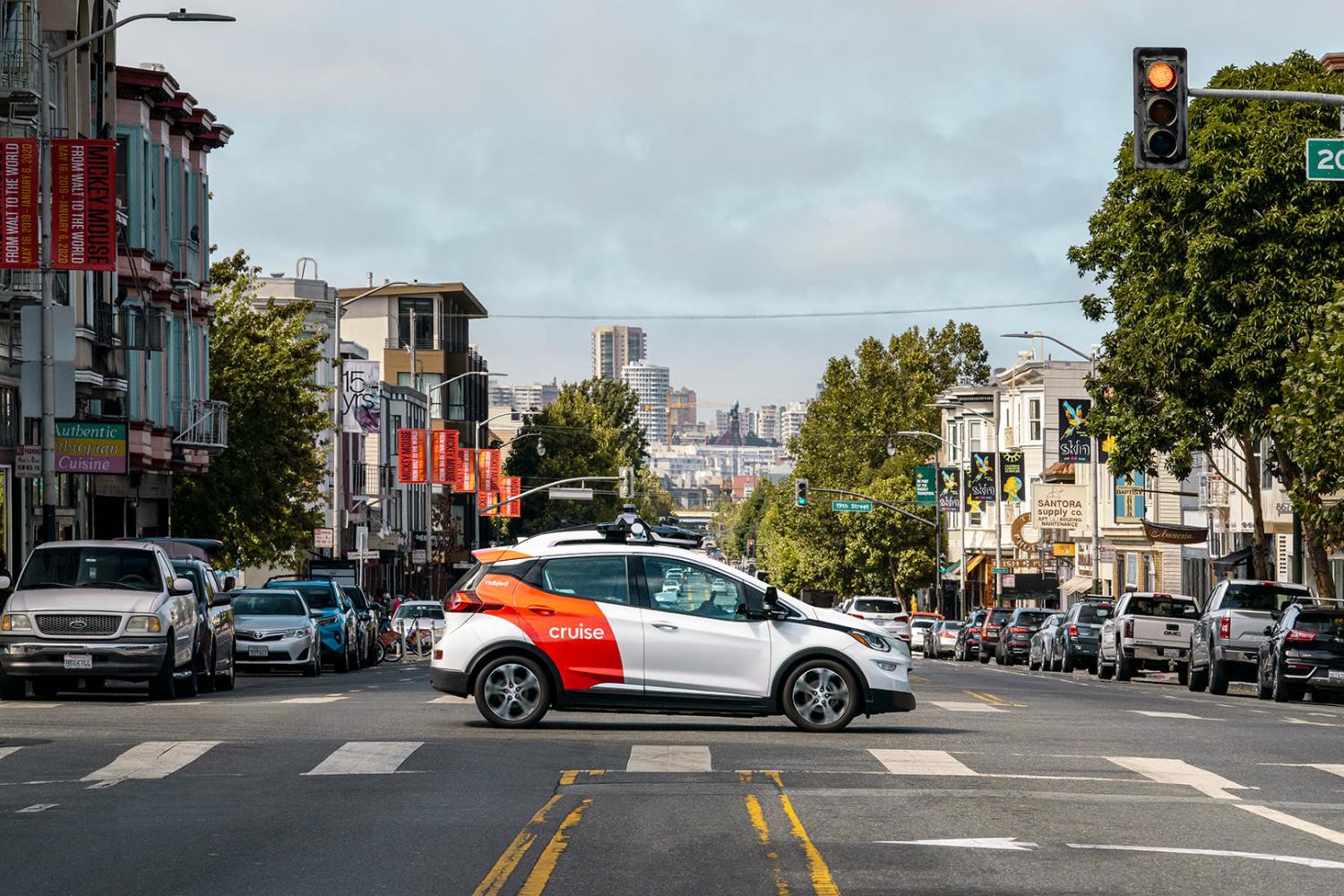

Of all the circumstances that we might have imagined kickstarting America’s smart city aspirations, a pandemic surely wasn’t on our list. And yet, our anxieties over disease transmission might just be the fuel that propels us towards a future in which autonomous cars become the urban norm.
A huge setback for public transit
For the last several months, the COVID-19 pandemic has compelled us to change our perspectives to suit a newly disease-aware world. We’ve adapted our day-to-day routine to suit social distancing recommendations and become leery of crowded, high-traffic areas. Our faith in public transit, in particular, has been shaken so profoundly that it very nearly demands an innovative fix. Time magazine recently described COVID-19’s impact on public transit as “apocalyptic.”
“[Buses] that once carried anywhere from about 50 to 100 passengers have been limited to between 12 and 18 to prevent overcrowding in response to coronavirus [...] Seattle transit riders have described budgeting as much as an extra hour per trip to account for the reduced capacity, eating into their time at work, school or with family,” Time’s Alejandro de la Garza wrote in July.
Sometimes, riders’ anxieties compel them to leave the bus before their stop; one woman who de la Garza interviewed described exiting several stops early with her seven-year-old son after the driver allowed a crowd of people to board at once.
“It’s very trying,” the source, Brittany Williams, shared. “I’ll put it in those terms.”
How can we keep public transit viable?
The obvious answer to the overcrowding and slow-transit problems would be to add more buses -- but such a move doesn’t seem economically feasible with the current decline in public transit use. In July, the Transit App reported a 58 percent year-over-year reduction in travelers within Williams’ home city of Seattle.
Numbers are a little worse in Washington D.C., with a 66 percent decline in Metrobus use and a 90 percent drop in Metrorail traffic. The losses experienced in New York City are among the worst, with the Transit App noting a 95 percent loss in the spring and a still-alarming reduction rate of 84 percent in late summer.
Pandemic fears have limited traveling, which in turn has limited fares to a trickle and all but eliminated cities’ abilities to add to their public transit fleets. According to a recent McKinsey report, 52 percent of American respondents travel less than they did before COVID-19. Many who do travel opt for a private vehicle over bus or train trips. A full third of surveyed consumers say that they “value constant access to a private vehicle more than before COVID-19.”
To risk stating the obvious: not everyone can buy or store a public car, nor should they even if they could. The environmental impact of replacing public transit with individual vehicles would be environmentally disastrous and dramatically exacerbate existing traffic and parking problems. Moreover, reports indicate that purchasing intent has dropped with the economic downturn; people don’t want to buy new cars when their incomes are uncertain.
An opening for autonomous cars
But I would argue that city-dwellers don’t necessarily need private cars -- they just need a mode of transport that offers the isolated, sterilized feel of personal vehicles with the cost-efficiency and dependability that characterizes good public transit. Ridesharing services like Uber and Lyft have set the groundwork for this, but aren’t a perfect fit. They’re expensive, focused on one person at a time, and naturally pose a virus-spread risk to passengers and drivers alike. But what if there were no drivers, only a limited number of masked and isolated passengers traveling pre-defined, regular routes?
Years ago, architect Peter Calthorpe painted a vision of California cities with autonomous cars that was very nearly this, writing: “Down the center of El Camino, on dedicated, tree-lined lanes, [would be] autonomous shuttle vans. They’d arrive every few minutes, pass each other at will, and rarely stop, because an app would group passengers by destination.”
There's a window of opportunity to reshape consumer perception of autonomous cars within a public-transit perception. Instead of anxiously fleeing buses inundated with close-seated crowds, mothers like Brittany Williams could order an autonomous ride and sit, as per a COVID-optimized version of Calthorpe’s vision, either alone or with one or two distanced others. Between routes, these cars could be sanitized and sent off to support new passengers. Such an approach would establish self-driving vehicles not as a one-person luxury, but a new and COVID-thoughtful form of public transportation.
The sustainability and convenience benefits of adding a self-driving shuttle service to public transit are countless. These include lessening the need for private cars, mitigating traffic deadlock, and improving passenger convenience. Autonomous shuttles could shoulder at least some of the burden carried by other public transit services and lessen the need for additional (if half-filled) buses and trains.
While it is true that Uber and Lyft have been talking about developing autonomous cars and next-gen taxi services for years to no avail, we are now closer than ever before to achieving viable autonomous driving technology. Earlier this year, the GM-backed driverless car startup Cruise received a permit from the California DMV that would allow the company to test driverless cars without safety drivers, albeit only on specific roads.
This represents a significant step forward in the deployment of autonomous cars and, if successful, could lead to the first fully-autonomous vehicles. It is worth noting that despite delays, Cruise hopes to launch a self-driving taxi service soon; its fourth-generation autonomous cars features automatic doors, rear-seat airbags, and, notably, no steering wheel.
If Cruise can manage to accomplish this, it stands to reason that autonomous shuttles are not all that far away. If anything, cities might have more opportunities to partner with self-driving startups and incorporate autonomous shuttles into municipal transit. Given that pandemic-prompted anxieties will likely persist until (if not well beyond) the emergence of a mass-produced vaccine, it seems likely that the window of opportunity for piquing consumer interest in socially-distanced autonomous transit could extend out over years.
Of course, there are few clear speed bumps in the way.
For one, there is still a pervasive stigma around the perceived safety of autonomous cars. Uber memorably halted its experiments in 2018, when one of its experimental vehicles struck and killed pedestrian Elaine Herzberg in Tempe, Arizona.
At the time, there were rumors that the company planned to divest itself of its self-driving interests entirely; however, the company has begun to restart its efforts on a significantly smaller scale in recent months. Cruise -- and any other autonomous car startup that takes on the challenge -- will need to assure the public of its products’ safety before it can achieve widespread acceptance.
Another major issue will be cost.
With public transit in such dire straits, obtaining the funds for a partnership between self-driving car startups and municipal transit may prove difficult in the short term unless the local government is convinced of the public’s need for autonomous shuttles and the revenue that such an approach could attract as a result of said need. Proponents will need to launch a media campaign to raise public awareness and bolster backing for adding autonomous shuttles to municipal transit.
If we can get beyond some of these initial hurdles, we can kickstart a smart, sustainable and COVID-aware urban transit system. As with the early days of online shopping, consumer perceptions of autonomous driving will quickly shift from it being a laughable luxury to a must-have public service, especially under pandemic conditions.
Image credit: Cruise